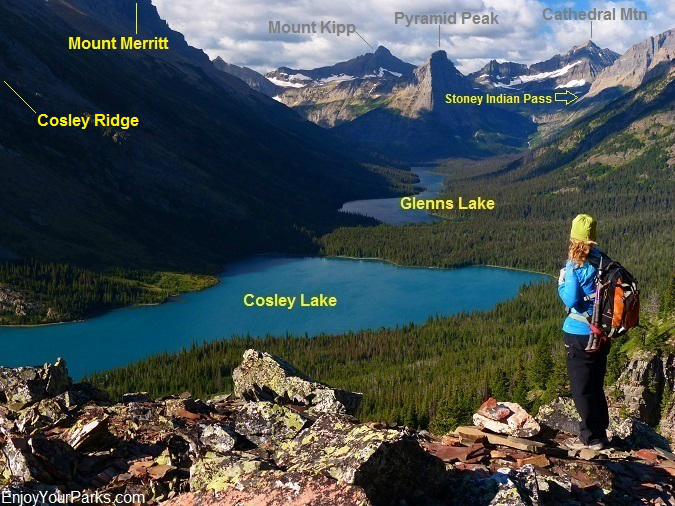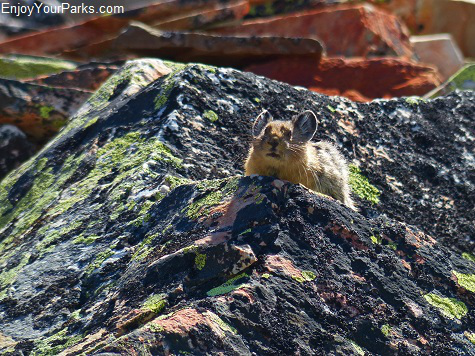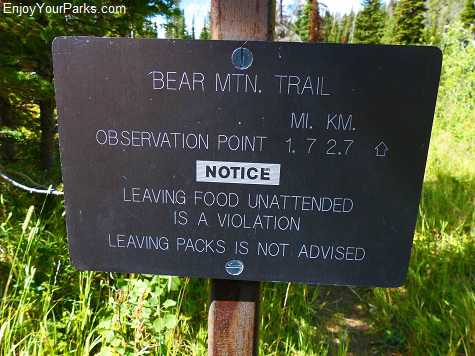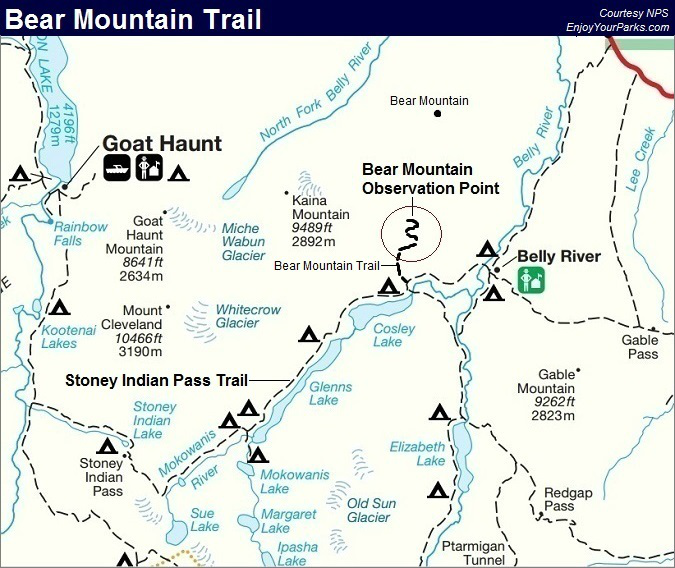Bear Mountain Observation Point
Includes Bear Mountain Trail

Bear Mountain Observation Point
Includes Bear Mountain Trail
Trailhead: Stoney Indian Pass Trail, near Cosley Lake Foot
Distance: 1.7 miles (one way)
Elevation Gain: 1,358 vertical feet
The hike to the Bear Mountain Observation Point in Glacier National Park is located at the end of the Bear Mountain Trail. This short 1.7 mile Glacier Park hike is on a spur trail of the Stoney Indian Pass Trail, just about a half mile northeast of Cosley Lake. The only people who ever see this trail junction are multi-day hikers on the 26.7 mile long Stoney Indian Pass Trail that runs between the Chief Mountain Customs Trailhead and Goat Haunt.
Occasionally this section of the Stoney Indian Pass Trail also gets traffic from multi-day hikers who came out of the Belly River Valley to spend a night at Cosley Lake before re-entering the Belly River Valley once again.
Definitely a "Must Do"
We strongly feel that the Bear Mountain Observation Point in Glacier National Park is a "must do" while hiking the Stoney Indian Pass Trail. And because it climbs about 1,400 feet in less than 2 miles, you're not gong to want to carry your overnight pack up to the Bear Mountain Observation Point. So we recommend that you hang your overnight pack at the Cosley Lake Campground, which is only about a half mile up the trail (westward), then walk back and hike to this incredible overlook.

The Bear Mountain Trail and the Bear Mountain Observation Point is just off the Stoney Indian Pass Trail in Glacier National Park, near the foot of Cosley Lake.
Finding The Trailhead
The Trailhead to the Bear Mountain Trail and the Bear Mountain Observation Deck is located along the Stoney Indian Pass Trail in Glacier National Park. This trailhead is located about a half mile east of the Cosley Lake Campground at the Foot of Cosley Lake.
The Bear Mountain Trail
The Bear Mountain Trail is very well maintained and extremely easy to follow as it climbs steeply to the Bear Mountain Observation Point in Glacier National Park. There are many switchbacks along this trail which makes the climb far easier. The view of the Mokowanis River Valley gets better and better the higher you get, and the views from the Bear Mountain Observation Point are absolutely breathtaking!
The Bear Mountain Observation Point

The view of the Mokowanis River Valley from the Bear Mountain Observation Point in Glacier National Park is absolutely spectacular!
 From the Bear Mountain Observation Point in Glacier National Park, you can see up the entire Mokowanis River Valley. Looking west you'll see Cosley Lake, Glenns Lake, Mount Merritt, Cosley Ridge, Mount Kipp, Pyramid Peak and Cathedral Mountain. We find it fascinating the difference in color between Cosley Lake and Glenns Lake.
From the Bear Mountain Observation Point in Glacier National Park, you can see up the entire Mokowanis River Valley. Looking west you'll see Cosley Lake, Glenns Lake, Mount Merritt, Cosley Ridge, Mount Kipp, Pyramid Peak and Cathedral Mountain. We find it fascinating the difference in color between Cosley Lake and Glenns Lake.
The reason Cosley Lake is such a more "turquoise color" than Glenns Lake is because Cosley Lake is fed by Whitecrow Creek, which is glacial water coming off of Whitecrow Glacier.
Whitecrow Glacier rests on the east face of the famous Mount Cleveland, which is the tallest peak in Glacier National Park.
The view to the east includes the Belly River Valley, Belly River Ranger Station, Gable Pass, Gable Mountain and Chief Mountain. The view to the north is blocked by the long south ridge of Bear Mountain, and the view to the northeast is of the eastern lowlands and prairie.
We strongly feel that the hike along the Bear Mountain Trail to the Bear Mountain Observation Point will be one of your highlights during your Stoney Indian Pass Trail hiking adventure in Glacier National Park, and it's definitely worth the time and effort to stand on this magnificent overlook that rises nearly 1,400 vertical feet above the valley floor!





